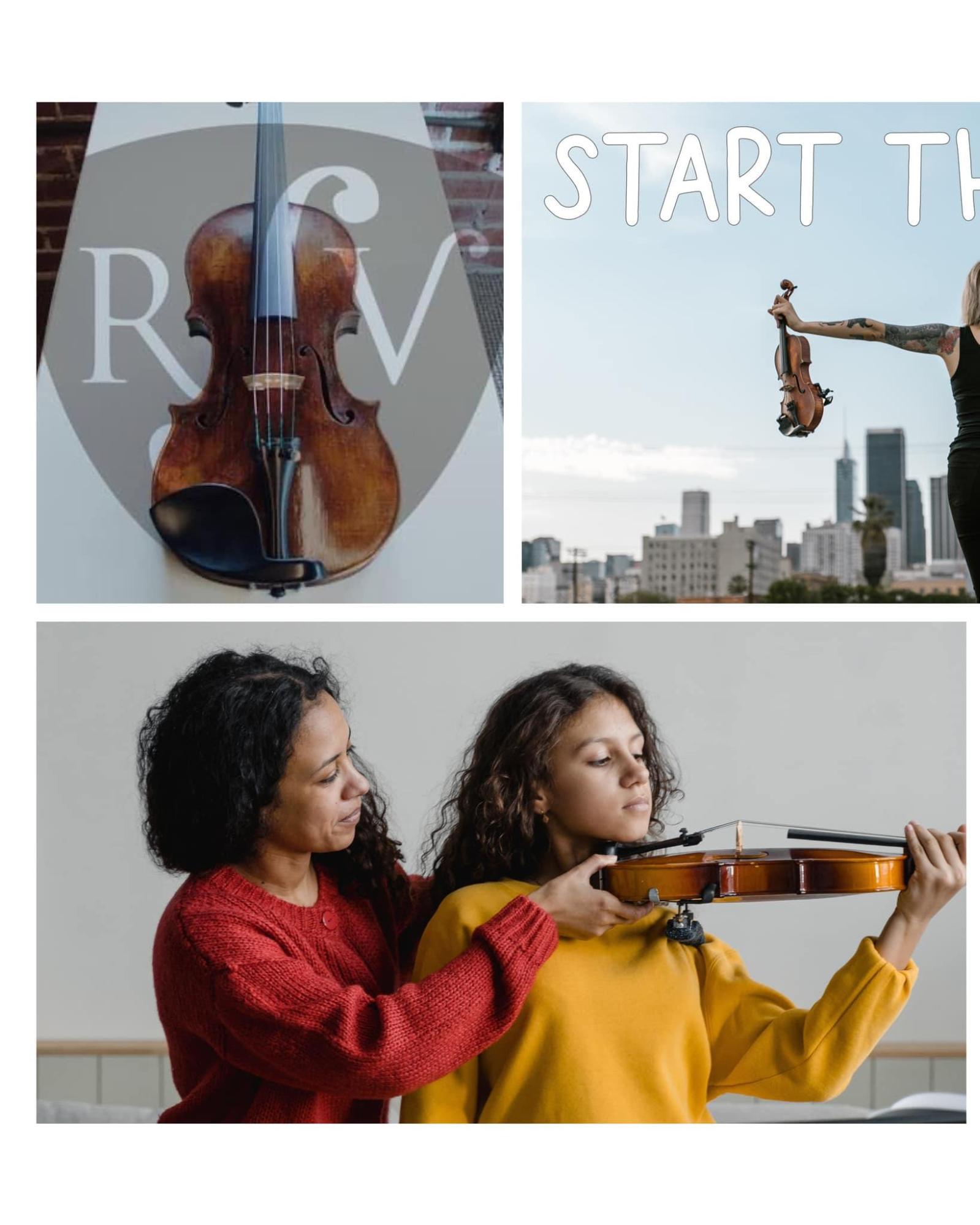Introduction
Embarking on the journey to master the violin is an adventure filled with nuances and subtleties, much like the instrument itself. For novices, navigating through the early stages can be akin to learning a new language, where each note and gesture holds its unique significance. This guide aims to illuminate the path for beginners, spotlighting six common missteps that can hinder progress. By addressing these early on, students can ensure their practice is built on a solid foundation, leading to a more fulfilling and enriching musical experience. Each step is a building block towards achieving harmony between musician and instrument, from selecting the right instrument to mastering the bow’s dance on the strings. Let’s begin this harmonious composition, steering clear of pitfalls and towards the crescendo of your violin mastery.
Choosing a Bad Instrument
Identifying Quality Violins
The journey to violin mastery begins with the instrument itself. A quality violin is not merely a tool but an extension of the musician’s soul. Look for violins crafted from seasoned woods, with attention to detail in the construction and finish. The sound produced should be clear, rich, and full of character. Avoid tinny or hollow instruments, which can limit musical expression and growth. Consulting with a reputable online violin shop can guide you toward making an informed choice, ensuring you start your musical journey with a companion worthy of the path ahead.
Common Pitfalls in Selecting an Instrument
Beginners often gravitate towards bargains, but in the realm of violins, the price usually reflects quality. A poorly made violin hampers progress with its inferior sound and can lead to frustration and disillusionment. Another pitfall is choosing the wrong size, which can affect your ability to play comfortably. Ensure you select a violin that matches your physical dimensions and feels like a natural extension of your body, enabling you to practice for extended periods without discomfort. Remember, a well-chosen violin from a reputable online violin shop can make all the difference in your musical journey.
Poor Posture
Correct Violin Holding Technique
Proper posture is foundational in mastering the violin. A correct violin holding technique involves balancing the instrument between your jaw and shoulder, ensuring it’s secure yet without tension. The neck of the violin should rest comfortably in your left hand, allowing easy finger movement across the strings. This position should feel natural and sustainable over time, preventing strain and promoting ease of play. Resources from an online violin shop often include guidance on posture and holding techniques, which can be invaluable for beginners seeking to establish good habits.
Exercises to Improve Posture
Regular exercises can significantly improve your violin posture. Simple shoulder rolls, neck stretches, and back alignment exercises can enhance your playing stance, making practice sessions more productive and less fatiguing. Incorporating these exercises into your daily routine strengthens the muscles used when playing, leading to better posture and a more enjoyable playing experience. Additionally, consider consulting with professionals with violins for sale who can offer personalized advice on posture improvement techniques tailored to your specific needs.
Using the Incorrect Bow Technique
Fundamentals of Bow Grip
Mastering the bow grip is crucial for producing a beautiful tone on the violin. The ideal grip involves a relaxed hand, with the thumb bent and positioned at the frog’s base, naturally allowing the other fingers to drape over the bow. This positioning facilitates control and fluidity in your bow strokes. Beginners should seek advice from experienced players or instructors at an online violin shop to ensure they adopt the correct technique. Proper bow grip enhances sound quality and prevents strain and injury, making practice sessions more effective and enjoyable.
Common Bowing Mistakes
One of the most common bowing mistakes is applying uneven pressure, leading to a scratchy sound or inconsistent tone. Another mistake is failing to use the entire length of the bow, which restricts the music’s expression. Violinists can avoid these pitfalls by practicing slow, controlled bow strokes and paying attention to the bow’s contact point on the strings. Seek resources that often include tutorials on correcting these mistakes, offering valuable insights for improving your technique. Remember, overcoming bowing challenges is a gradual process that requires patience and persistence.
Not Practicing Enough

Creating an Effective Practice Routine
A consistent practice routine is vital to mastering the violin. Beginners should aim for daily practice sessions, starting with as little as 15 minutes and gradually increasing the duration. The focus should be on quality over quantity. Incorporating scales, arpeggios, and simple pieces can help build a solid foundation. Utilize resources from an online violin shop to find practice materials suited to your level. Regular practice makes muscle memory and improves intonation and bowing technique, speeding up your progress.
Overcoming Practice Challenges
Practice can sometimes feel daunting, especially when progress seems slow. To overcome these challenges, set clear, achievable goals for each session and celebrate small victories. Mixing up your routine can keep practice interesting—explore various genres and pieces available. If motivation wanes, consider joining a community or ensemble to share experiences and learn from others. Every great musician faces challenges; persistence and a positive attitude will carry you through.
Sacrificing Tone for Speed
Importance of Developing a Beautiful Tone
A beautiful tone is the hallmark of a skilled violinist. It’s essential to prioritize tone quality over speed, especially in the early stages of learning. Developing a rich, whole tone involves focused practice on bow control and pressure. Beginners should concentrate on slow, deliberate bowing on open strings, listening for the sweetness of sound. With guidance from resources, investing time in violin bows for sale for tone development sets a solid foundation for advanced techniques and repertoire.
Balancing Speed and Sound Quality
As you progress, integrating speed with sound quality becomes crucial. Start by mastering pieces slowly, ensuring a beautiful tone at all times. Gradually increase the tempo as long as you can maintain tone integrity. Utilize metronomes and recordings to gauge your progress. Remember, a fast performance should always keep the beauty of the music. Strive for a balance, and feel free to seek advice from experienced professionals at an online violin shop to select music that challenges your speed and tone control.
Failing to Read Notation Properly
Basics of Music Notation for Violin
Understanding music notation is foundational for every violinist. Begin by familiarizing yourself with the staff, clefs, and notes specific to violin music. Start with simple scales and songs, gradually introducing more complex rhythms and pitches. Utilize online resources to find beginner-friendly sheet music that complements your learning pace. Remember, reading music is a skill that develops over time, requiring patience and consistent practice.
Tips for Reading Music More Efficiently
To enhance your music-reading efficiency, practice sight-reading regularly. Allocate part of your practice sessions to playing new pieces, focusing on keeping the rhythm and flow even when mistakes occur. Tools like flashcards can help reinforce note recognition, while apps and online tutorials can offer additional practice in music theory. Engage with a community of learners and professionals through various platforms that share tips and resources for improving music reading skills.
Conclusion
Remember that every musician encounters obstacles. The key lies in recognizing these common beginner mistakes and actively seeking ways to avoid them. From selecting a quality instrument to mastering the correct posture, bow technique, and music notation, each step is crucial. Regular practice, balanced with guidance from reputable sources, ensures you overcome these challenges and enrich your musical journey. Let your passion for music drive you, and remember, every great violinist started precisely where you are now.
